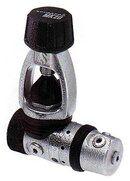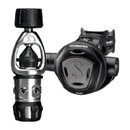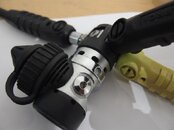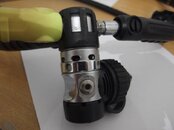There's a bit more to it. The added bulk of a 2 gauge console is cumbersome while diving, and the need for a redundant depth gauge is really very low in recreational diving. If you are diving with a buddy, you simply use his depth data in a pinch if your computer were to fail during a dive. Also, you will want to check depth/time pretty frequently, and air pressure only occasionally once you get some dive experience. This means it's very convenient to have the depth/time info on your wrist and you can clip the SPG on your BC for much of the dive. I think the most convenient is a bare SPG, no boot, on a 24" hose with a bolt snap attached. The boot also tends to collect water; they're not really waterproof and sea water gets trapped in them. This can be pretty corrosive to anything metal in the console.
yet folks are going to do what they are wanting to do.... My wife will not give up her console, so its easier to just let her do it that way. Just make sure its stowed/retained in a decent manner, and carry on. There really isn't the "downside" folks go on and on and on about.... maybe in time......







